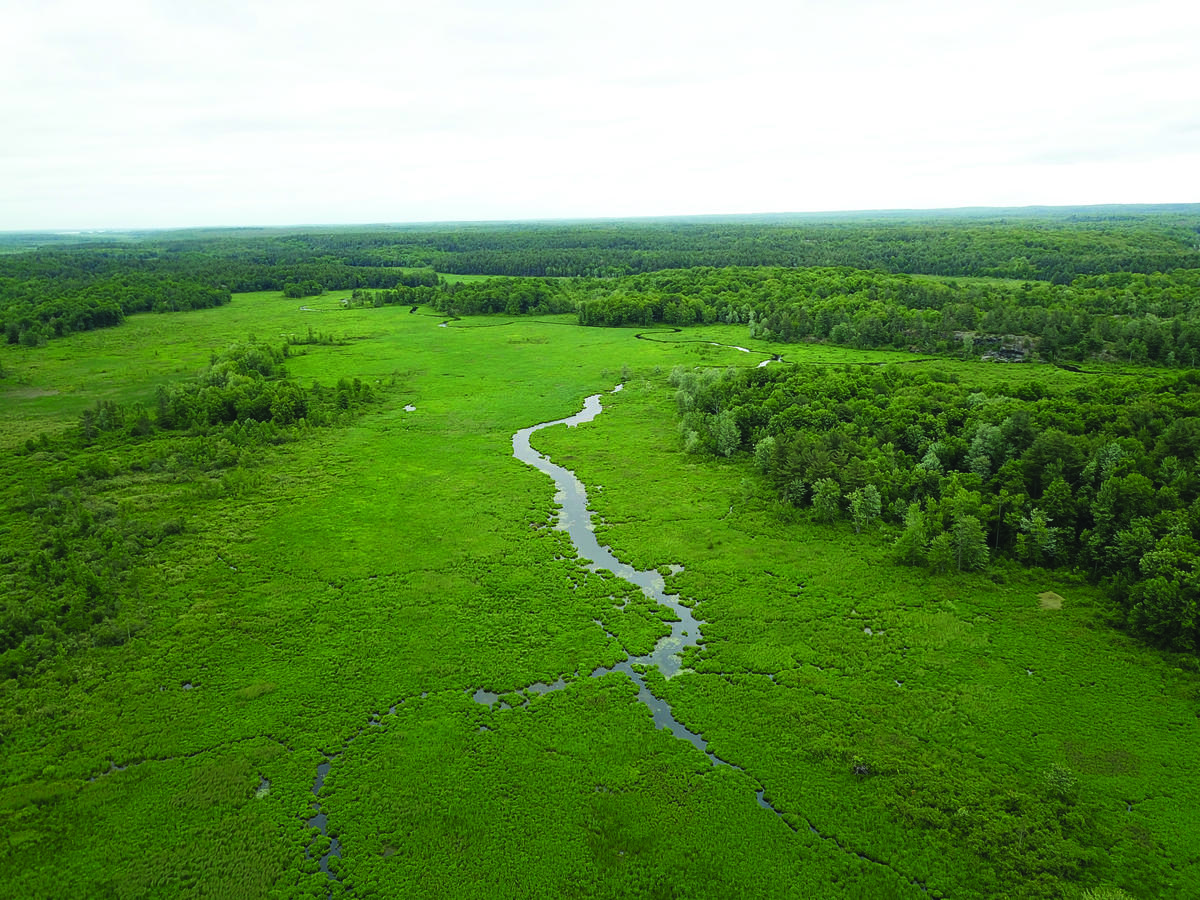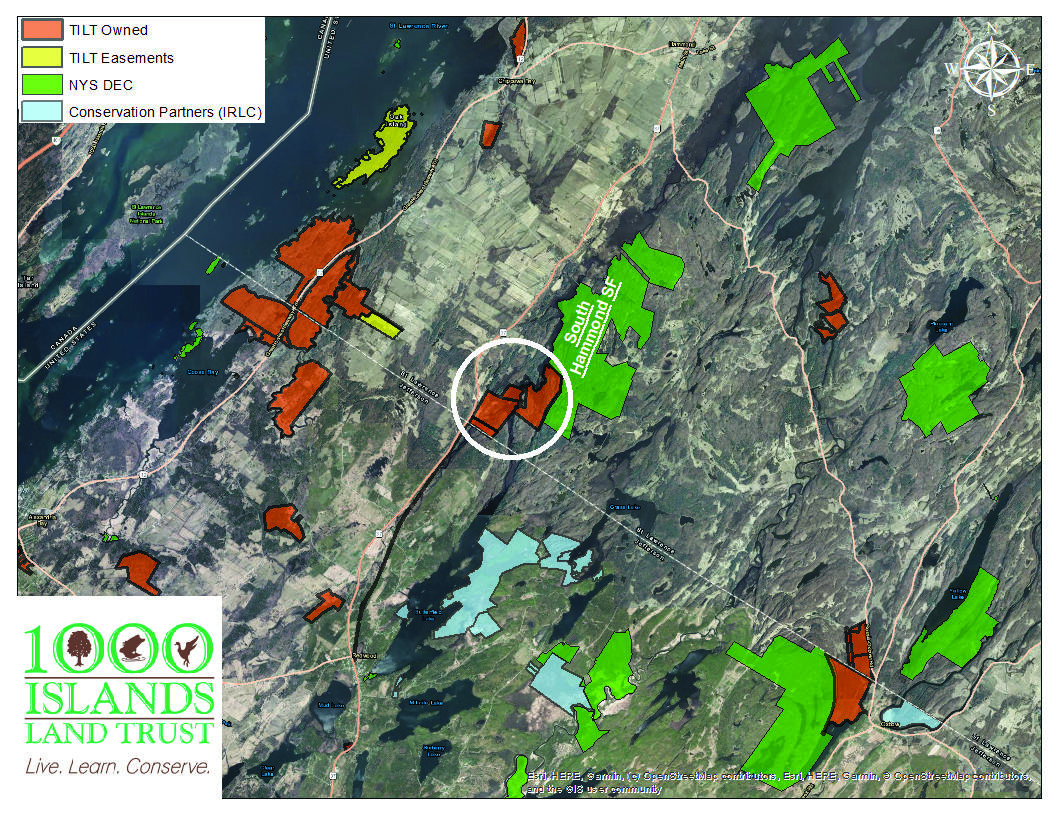by Spencer Busler, Assistant Director
It may be the unexpected, chilly autumn breeze bringing in a rumbling weather front. It may be the sweet, earthy aroma of the rusty leaves after they’ve met the damp forest floor. No matter the cue, all of us who call the Thousand Islands home know that the seasons are changing.
Nights are becoming longer than the days. And with each gust, acorns and hickory nuts rain from above. Beaver ponds swell, and the grounds soften as they replenish with each raindrop. The natural world teems as the flora and fauna read the signs of the inevitable winter, seeking to build nutritional reserves for the upcoming torpor. The warm hustle and bustle of our short summer season may have subsided, but our furred and feathered counterparts continue to ramp up in activity, fully recognizing the change of seasons.
For some, these signs trigger a migration. As many of our family and friends load their cars or board southbound planes, the skies fill with honking vees of geese pointed in the same direction. Black bears roam for miles in search of the next productive beech stand, and the deer herds prepare to descend from higher elevations in anticipation of the looming snowfall.
Much like our well-marked interstate highways and regulated airspace, these animals also need safe, unfragmented freeways for their travels. In an effort to conserve one of the most important wildlife migration corridors in the eastern United States, TILT has conserved three new adjoining parcels of land totaling nearly 500 acres adjacent to the South Hammond State Forest in St. Lawrence County.
In the heart of the US Algonquin to Adirondack (A2A) corridor, these wild and open properties feature towering forest stands, expansive wetland flats, meandering streams and diverse upland habitats. With assistance from a North American Wetlands Conservation Act grant, administered by TILT’s conservation partners at Ducks Unlimited, and with the help of private donors, these vibrant lands have been purchased by TILT for permanent protection against development and incompatible use.
“Connectivity is a key objective of the Algonquin to Adirondacks Collaborative,” said David Miller, Executive Director for the Collaborative. “Our vision of a resilient, ecologically connected A2A region depends on our partners taking local actions that contribute to the bigger ecological picture. Protecting key strategic environmental areas that improve connectivity in areas like South Hammond is a perfect example!”
The South Hammond region between Butterfield Lake and Black Lake has been recognized as being highly resilient to climate change. This is in part because of the existing mosaic of conserved lands in the area, but also because of its landscape and habitat diversity. The adjoining 2000+ acre South Hammond State Forest features unique sandstone pavement barrens, of which there are likely less than two dozen occurrences across the entire state. This region also supports a variety of rare, threatened and endangered species such as the pied-billed grebe and the peregrine falcon.
These newly conserved lands are positioned less than two miles east of TILT’s single largest contiguous preserve: the Crooked Creek Preserve. The Preserve’s popular Macsherry Trail is a hiking destination for tourists, seasonal and year-round residents. Its popularity stems not only from its convenient location near Kring Point State Park, but also from the high likelihood of experiencing wildlife while on the trail. Users frequently report turtles, foxes, ducks, beavers, rare birds, deer, porcupine, and even the occasional black bear and bobcat! These animals aren’t here by coincidence. The Crooked Creek Preserve offers them over 2,000 acres of intact wilderness to live, feed and breed, and by establishing a conservation corridor between the Preserve and the State Forest, we’re protecting these populations from the threat of isolation as we move into the future.
“Protecting this region is more important now than ever,” said Alex French, the Sustainability Coordinator for Clarkson University’s Institute for A Sustainable Environment. He also serves as the President of the Algonquin to Adirondacks Collaborative. “Meanwhile the beauty of the Thousand Islands region is causing an uptick in development, isolating forest cores from each other as new roads and homes are built. TILT’s recent work to protect land on three parcels adjacent to the South Hammond State Forest is deliberate, focused, and essential for our wildlife to adapt to climate change.”
Through TILT’s conservation of these properties, the organization is following through with its commitment of protecting the most important natural resources of the St. Lawrence River Valley for both current and future generations. In doing so, the organization is shortening the gap between conservation lands within this important corridor, in turn allowing our precious wildlife to rightfully roam free.





